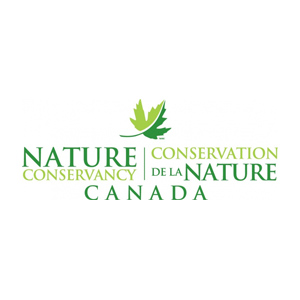NATURE CONSERVANCY OF CANADA
SFI Is Helping Land Managers Conserve Vernal Pools, Important Habitats for Declining Populations of Amphibians
Investigating Biodiversity Impacts of Forest Management on Vernal Pools in the Kenauk Reserve, Nature Conservancy of Canada
Why this project matters

Amphibian populations have been declining worldwide for nearly two decades, and little is definitely known about why. But we do know that vernal pools — temporary water bodies that form in forests during periods of high precipitation or spring snow melt — provide important habitat for a variety of plant and wildlife species of concern, including frogs, salamanders and other amphibians. A key feature of vernal pools is the absence of fish, which means amphibians’ eggs don’t get eaten by them. Research on vernal pool habitats, on the Kenauk Nature property, will help forest managers identify and conserve these important sites.
How the project helps conserve biodiversity
DNA from water samples collected at 28 vernal pools will be extracted for sequencing. This will help identify specific species and the numbers of amphibians and other animals that rely on the vernal pools. For example, the spring salamander, a species of special concern under Canada’s Species at Risk Act, calls Kenauk home. Identifying where these salamanders are found will help land managers implement species-at-risk training for harvesting professionals as required by the SFI Forest Management Standard.
SFI’s contribution
An SFI Conservation and Community Partnerships Grant is supporting research in these important ecosystems, in partnership with the Nature Conservancy of Canada and Kenauk Canada. The Kenauk Nature property, which covers 65,000 acres/26,000 hectares, is an hour west of Montreal. This vast territory contains working forests certified to SFI, and Kenauk Canada is an SFI Program Participant. Kenauk is also a great example of how forests can provide multiple values focused simultaneously on conservation, recreation and economic productivity.
Support from SFI is facilitating cooperation between academic institutions, forest managers and conservation groups to determine what species live in the Kenauk vernal pools, and building understanding of the forest conditions that will help them survive. The project also creates an exceptional learning opportunity as these organizations share their findings publicly through workshops, reports and outreach to Kenauk’s many visitors.
How the Project Helps Forest Managers

Study results have the potential to play a role in improving silvicultural practices across the range of vernal pools in North American deciduous forests. When these research findings are shared with the SFI community, it will help land managers identify which vernal pools are likely to be important sources of biodiversity richness or rareness. The project will also provide data to support responsible forest management practices including:
- Scouting for potential vernal pools using wetland maps, aerial photographs and local knowledge
- Documenting vernal pools found in the area
- Avoiding vernal pools when planning resource roads
- Protecting the pool perimeter during harvesting
- Preventing slash and sediment from entering the pool
Project Partners
This partnership features cooperation between academics, forest managers, and conservationists.
Project lead: Nature Conservancy Canada
- Sustainable Forestry Initiative
- Centre d’enseignement et de recherche en foresterie de Sainte-Foy
- Centre GEOTOP, Université du Québec à Montréal
- Institut des sciences de la forêt tempérée
- Kenauk Canada (SFI Program Participant)
Related information
- Nature Conservancy of Canada, Earth Rangers and SFI Want to Make Life Less Scary for Amphibians at Halloween and All Year Round. Media release.
- The Nature Conservancy of Canada is Canada’s leading land conservation organization, working to protect valuable natural areas and the plants and animals they sustain. Since 1962.
- Research at the Kenauk Institute.

About Nature Conservancy Canada
The Nature Conservancy of Canada is Canada’s leading land conservation organization, working to protect valuable natural areas and the plants and animals they sustain. Since 1962, the Nature Conservancy of Canada and its partners have helped to protect more than 2.8 million acres/1.1 million hectares coast to coast. Through strong partnerships, the Nature Conservancy of Canada works to safeguard natural areas so that our children and grandchildren will have the chance to enjoy them.
Share
COPY LINK: https://forests.org/grantnckenauk/